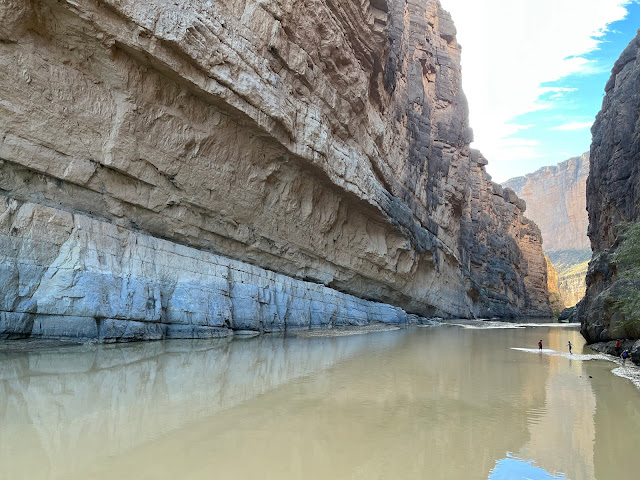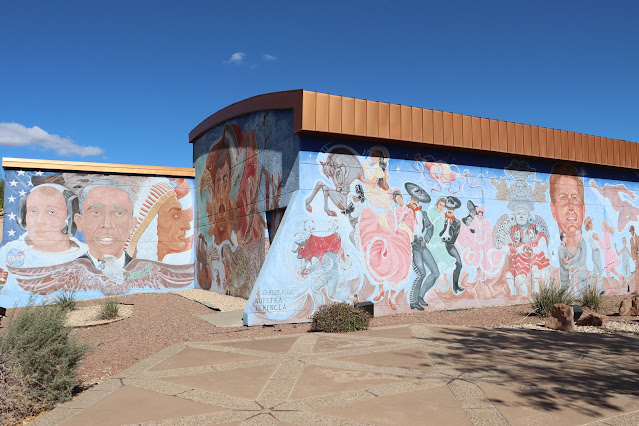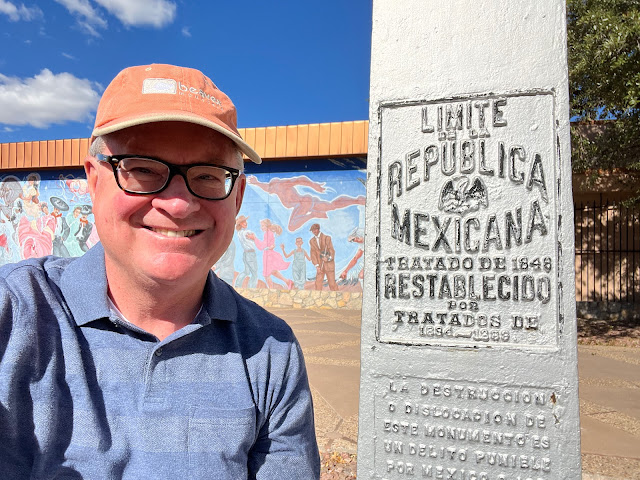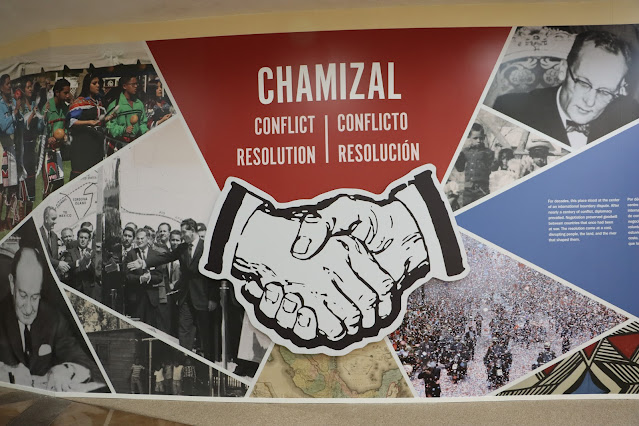I took a New Mexico and west Texas road trip the week before Thanksgiving. My quest was to visit four national parks (three for the first time) and whatever else along the way looked interesting. I drove to Chama, New Mexico the first day.
I think I was the only guest that night in the old Chama Hotel.
Most people come to Chama in the summer and fall to ride the old railroad .
Day two I headed south on highway 54. Destination the beautiful (setting and structure) Monastery of Christ in the Desert. It is tucked far away 13 miles down a dirt road that follows the Chama River.
Benedictine "Prayer Roll".
Love the yellow layer.
Next stop was the Ghost Ranch where Georgia O'Keeffe lived for part of her life.
I hiked up to get a good view of Chimney Rock.
Then I took a guided tour that explored part of the ranch not opened to the public--except on a tour. It led out to the home where O'Keeffe live. Along the way we stopped and our guide showed us paintings by O'Keeffe and then the location that inspired the painting. The dead tree in the lower left center of this image inspired the next painting.
O'Keefe used the depression between two mounds for this painting but chose to leave out the plateau and cliffs in the distance to focus more on the sky.
Pedernal Mesa is sacred to local tribes and was loved by O'Keeffe. Her ashes were scattered on top of the Mesa.
The lower grey strata of rocks in the area are home to many dinosaur fossils--mostly the Coelophysis, the state fossil.
This is the local church in the town of Abiquiu where O'Keeffe had a second home. I didn't buy a ticket to tour that home.
I then drove back roads to get to see the Rio Grance Gorge to the northwest of Taos (where I stayed that night) which sits at the base of the mountains in the distance.
Day three I started out at the Taos Pueblo.
Workers refreshing the mud walls.
The cemetery is located where a Catholic church once stood that was destroyed by the Taos Puebloans in a 1660 uprising to expel the Spanish conquistadors (often under the guise of religion). The Spanish pulled out for two decades before slowly taking control of the restive pueblos in New Mexico and Arizona.
The bell tower of the destroyed church stands as a reminder of Spanish colonial control that sought to wipe out Puebloan culture and religion.
Our guide is from one of the families that still maintain homes in the pueblo--used mainly on ceremonial days. She is a nursing student.
Most families live beyond the world heritage site core so that they can have electricity and other modern convinces.
Drove up into the nearby mountains to see Taos Ski Resort. I've always wanted to ski here.
Took this photo for my brother Bob who likes to make chairs and hat racks out of old skis.
At the recommendation of a friend, I drove the scenic high road from Taos to Santa Fe in part so I could visit the sacred Sanctuary in Chimayo.
The two main churches in this Catholic shrine have walls inside covered with photos of people who have been healed by coming here. I dutifully did not take photos of the inside of the two churches.
The Children's chapel was very touching--full of photos of children who have been blessed by this church.
The three cultures of Mexico and New Mexico--Indigenous, European and Mestizo (mixed). Adding to the fun of this trip was seeing so much Mexican culture and influence--knowing that Will was in Mexico seeing it all too.
More photos of people blessed by the shrine.
Next stop Los Alamos and the Manhattan Project National Historical Park. The visitor center was closed but it provided a map to an interesting walking tour. Earlier this year I visit the Hanford, Washington site of this three-site historical Park. Guess I need to visit Oak Ridge,Tennesse next.
Just a few weeks earlier I had watched the fascinating movie Oppenhimer which follows the creation of nuclear weapons--much of which coordinated by these two men (Oppenheimer left and Groves right) and the secretive team that set up shop in a boy's school in isolated Lo Alamos.
Exhibits in the Los Alamos history museum
The home on Bathtub Row (the only accommodations in town at the time that had bathtubs) where Oppenheimer lived.
Exhibits in the Bradbury Science Center. Scale models of the Hiroshima bomb (black) and Nagasaki (yellow).
While driving I listened to this excellent book about the bombing debate of WWII--should the Allies develop and use pinpoint bombs that could knock out strategic installations or stick with nighttime high altitude bombing that terrorized the populous (think Hiroshimi and Nagasaki). I couldn't help but also think about the current bombing over Gaza that claims to be pinpoint, but in the process is killing and terrorizing the whole population.
Day three started out walking around downtown El Paso. Interesting round capitol building.
Always grateful for the CCC workers who make so many of our hiking trails.
No explanation for this public art on the capitol grounds--but the names of many indigenous American tribes and perhaps names of battle grounds and the barb wire on top indicate it is a protest memorial to the harsh treatment of native peoples.
St Francis Cathedral near the main plaza.
And the first Native American Saint.
Bagpipes welcomed attendees at a funeral.
Meanwhile a new promotional photo was being taken of the newest member of r the fire fighting fleet.
Excellent huevos rancheros for a late breakfast.
So much cool art in town. Stopped in a few galleries to enjoy.
This was a nice stop--All about the life and work of O'Keeffe.
Final stop in Santa Fee was the Museum of International Folk Art. The largest exhibit hall was full of nativities, toys, dioramas etc from around the world.
Polish Nativity
Interesting exhibit about Inuit Parkas.
And an exhibition about Mexican folk art.
Spend the afternoon driving a lonely road through Vaughn to Rosewell.
Thai food for dinner and then on to Carlsbad.
All four parks on my itinerary were located in the Chihuahuan desert.
First park: Calrsbad Caverns. I visited here at age 15. Happy to finally return. Very impressive.
I walked the steep switch back trail in and out. I first did the self guided Big Room tour (red line) then the ranger guided tour (green line) through the impressive King's Palace and Queen's Chamber.
My i-phone was the camera of choice in the caverns.
I was underground for over five hours. A lovely visit.
Stayed a second night in Carlsbad. Next day I visited Guadalupe Mountains National Park just over the border in Texas. I had orginally planned to hike Guadaloups Peek--the highest peak in Texas, but once there the full parking lot and the thought of a rocky steep climb motivated me (at the suggestion of a ranger) to head to the northern McKittrick Canyon section of the park which promised fall colors and a less steep hike. I hiked the McKittrick Canyon Trail past the Pratt Cabin and the Grotto up to the Notch. It a a great day temperature wise.
The ranger was right--fall colors in mid November.
Favorite shot.
The Grotto
The view from westward from the Notch.
The view east.
Looking back up at the Notch.
Spent the next night in Alpine Texas, then next morning Park #3--Big Bend.
I entered the park via Persimmon Gap. I drove via Panther Junction to see the Rio Grande first at Boquillas Canyon.
Stopped first at the Boquillas Del Carmen point of entry between the US and Mexico. I didn't think to bring my passport.
End of the trail looking east.
Looking west. The canoes are on the Mexican side.
I then drove westward across the park to the other main access point to the Rio Grande at Santa Elena Canyon.
From the canyon entrance looking East. Mexico in on the right.
End of the trail looking west. Mexico is on the left.
I enjoyed watching two young teens running and laughing through the river. They had hiked further upstream in the channel. Thier parents show up on the bank. Later as I exited the canyon the two teens passed me on the trail. I recognized them and showed them the photo I had taken. I told them I would be happy to share it with them. Later when the parents caught up to us the mom was happy to have me air drop her the three photos of their fun and adventuresome outing.
Exiting the canyon I noticed people wading across the narrow neck of the river to the Mexican side. I decided to go check it out.
In Mexico. There were no border signs, no border agents and nothing that said do not cross into Mexico so I (and others) waded (ankle deep) across.
It was a lovely visit south of the border. (Thanks to Sarah for the birthday gift. Happy to be the dad of a Simmons College graduate student.
Second night in Alpine then next day I headed northward. First stop was for the geography geek in me.
For years I showed this image in my political geography class as an example of how rivers as boundaries can be problematic when they shift courses. I knew the basics of the settlement, but not much more. While studying a map for my return journey I noticed this National Memorial to the peacefully resolved centruy long border dispute between the US and Mexico, I knew I had to visit. I learned a lot.
The shifting channels of the Rio Grande.

Standing in what was once Mexico.
A fitting exhibit for the Monday before Thanksgiving.

Final stop: White Sands National Park. I parked and started walking out across the dunes. Many kids were sledding.
North of the National Park is where the Mahattan project detonated the first nuclear explosion.


Sunset north of Alamogordo. Drove to Socorro for the night and then the next day drove the rest of the way back home. A grand outing.














































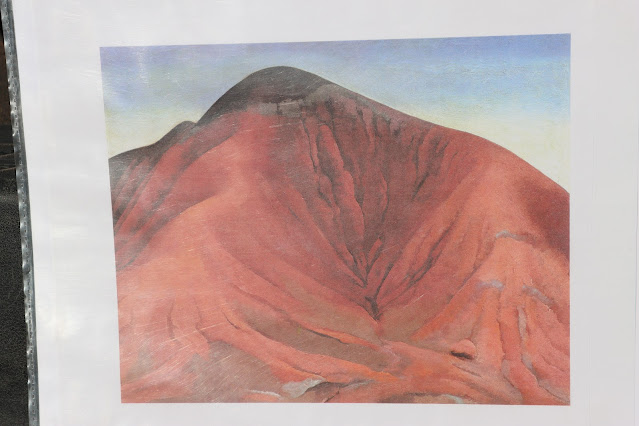
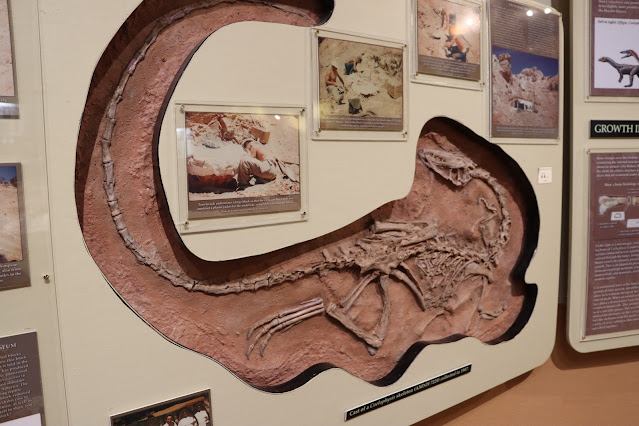






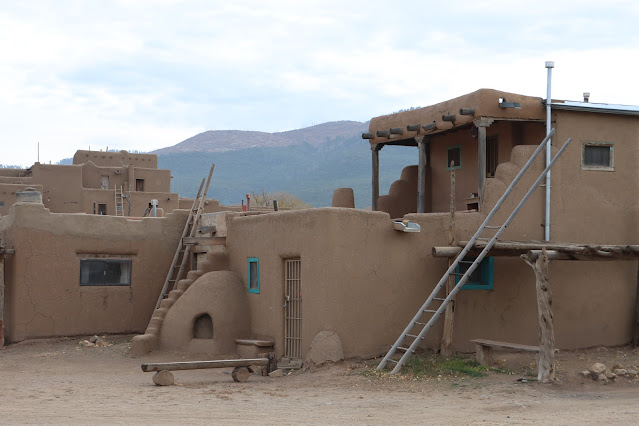



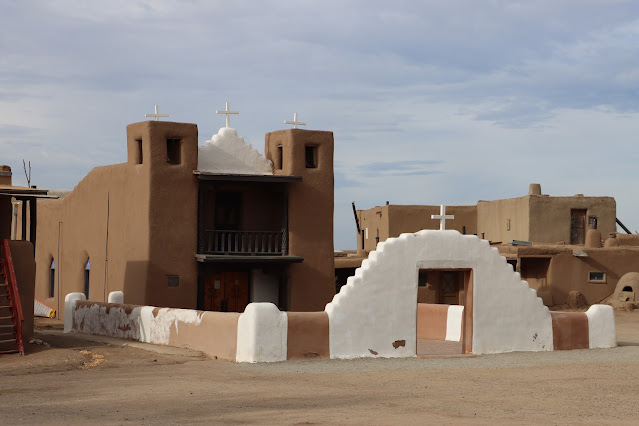

























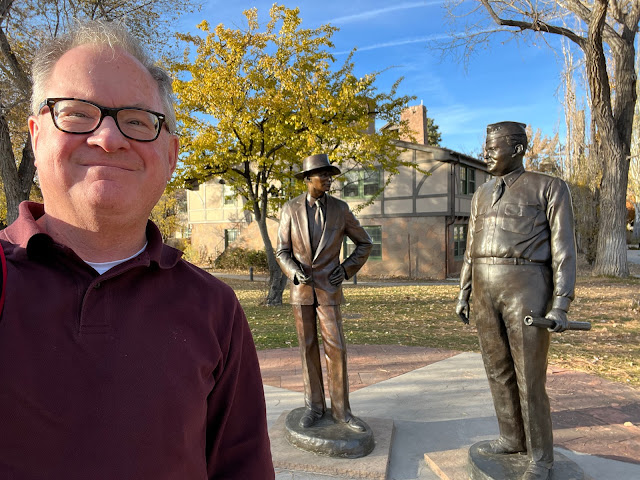










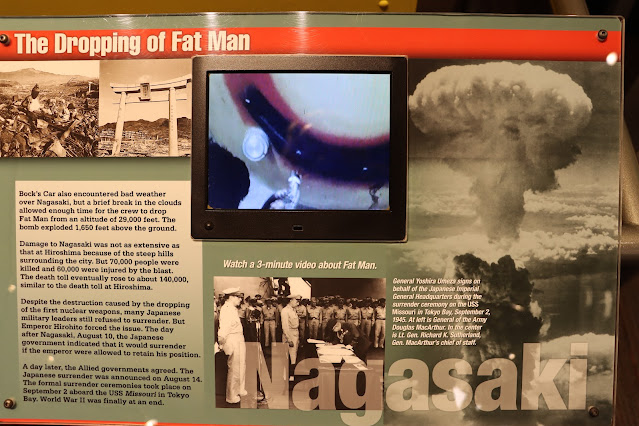




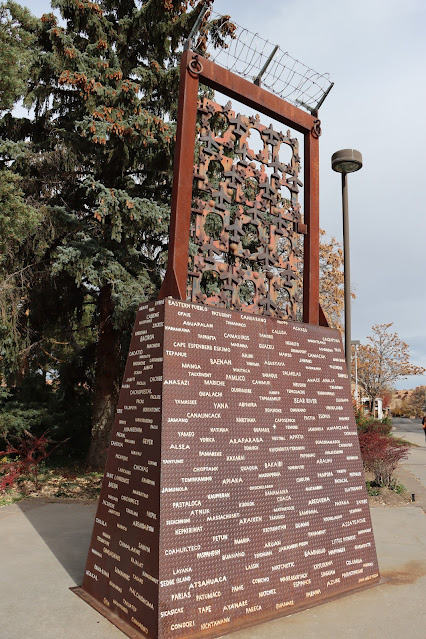






































.JPEG)
.JPEG)
.JPEG)
.JPEG)
.JPEG)
.JPEG)
.JPEG)
.JPEG)

.JPEG)
.JPEG)




































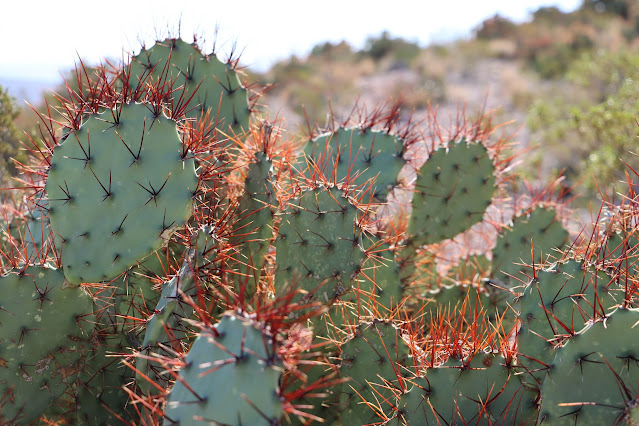






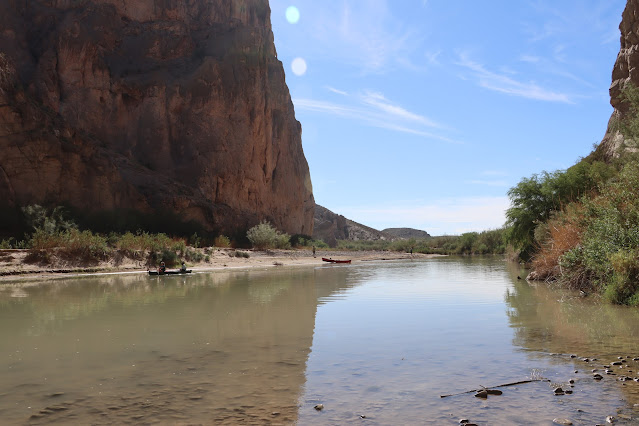

.JPEG)














.JPEG)

